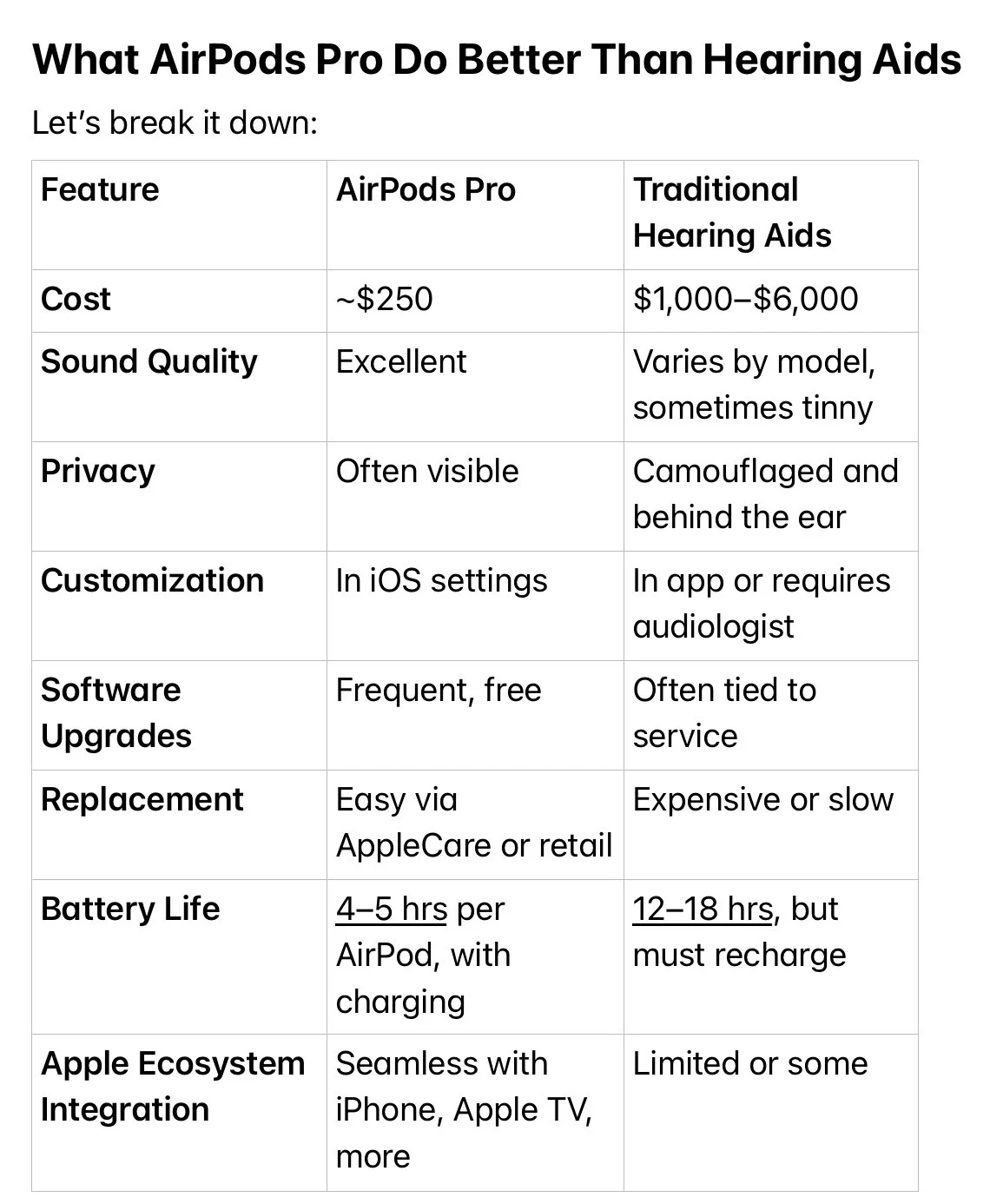At age 50, I was diagnosed with moderate hearing loss—a revelation that would fundamentally change my approach to daily communication and social interaction. My initial foray into traditional hearing aids proved disappointing: the $7,000 devices produced a distinctly tinny audio quality that the audiologist assured me I would “adjust to over time.” Despite professional guidance, adaptation proved challenging, and I found myself avoiding the devices more often than wearing them.
As my hearing loss progressed, compensatory behaviors became increasingly apparent and problematic. I developed a repertoire of coping mechanisms—blank stares, reflexive smiling and nodding to mask comprehension gaps, and the exhausting necessity of requesting repetition multiple times during conversations. These behaviors created a cycle of frustration and social embarrassment that many individuals with moderate hearing loss experience.
The psychological impact of untreated hearing loss extends beyond mere inconvenience. Social withdrawal becomes a common response as individuals struggle with communication barriers. This isolation carries significant medical implications: prolonged auditory deprivation can result in irreversible nerve damage within the ear, compounding the original hearing difficulties.
Enter technology. Over the past few years, Apple AirPods Pro have quietly become more than just premium wireless earbuds. For people like me, they’ve become incredibly effective, multi-use tools—serving not only as great headphones but also as functional, customizable hearing aids.
If you’ve ever looked at the price tag of traditional hearing aids—often thousands of dollars—you’ll understand my excitement. At around $250 or less, AirPods Pro offer excellent sound quality, smart features, and ongoing software updates that consistently improve the experience.
AirPods Pro as Hearing Aids? Yes, Really.
Apple’s Transparency Mode and adaptive audio features make the AirPods Pro a solid alternative to traditional hearing aids for many people with mild to moderate hearing loss. With some customization, they can amplify ambient sound, reduce background noise, and deliver crystal-clear audio right where you need it—directly in your ears. Here’s how I use mine:
1. All-Day Wear, Battery Problem Solved
AirPods Pro have a battery life of around 4–5 hours per charge, which can be a deal-breaker if you're used to wearing hearing aids all day. I solved this two ways:
Option 1 (my favorite): Wear one AirPod at a time, keeping the other in the case to charge. This way, I rotate ears and can essentially wear them 24/7.
Option 2: Buy two sets and swap out both when needed. More expensive, but still cheaper than a pair of hearing aids.
2. Settings That Work for Me
Transparency On: My default. Lets me hear people and sounds around me clearly.
Noise Cancellation On: Only when I wear both AirPods at the same time—great for:
Airplanes
Going to bed early while your partner stays up watching TV
Find My On: Works, whether you left them behind or just misplaced them in the house.
Adjustments: In the Accessibility settings, you can amplify soft sounds, sharpen speech, or reduce ambient noise—great for tailoring to your specific hearing needs.
3. Smart Uses Beyond Hearing Aid Features
Apple TV: Connects seamlessly for late-night TV watching.
Phone calls: Voices come through crystal-clear.
In noisy places: Adjust background noise filtering on the fly.
Podcasts, audiobooks: I prefer to listen with AirPods even in the car.
When NOT to Use Transparency Mode
While transparency mode is brilliant, there are times I intentionally turn it off:
Walking outside near traffic: It can amplify car noise
Crowded public spaces: Transparency can be overwhelming and tiring.
When focusing or relaxing: Noise cancellation helps create a quiet cocoon.
You really do need to do the Ear Tip Fit Test in the AirPods settings. This ensures you’re getting proper seal and optimal performance—especially for noise cancellation.
A Look at What’s Next
I’m truly excited about where Apple is heading with AirPods Pro. Some upcoming features already in the pipeline:
Pro-level microphones for clearer conversations, even podcasting
Gesture-based controls (like snapping a photo with a head movement)
Real-time language translation
More refined hearing aid features (in iOS Accessibility settings)
I’ve already started seeing more people wearing just one AirPod, like I do—particularly in public spaces like airports (shoutout to JFK). It’s subtle, affordable, functional; and it doesn’t scream "hearing aids".
Final Thoughts
AirPods Pro aren’t a one-size-fits-all solution. Some people can’t tolerate in-ear devices, and others will need the precision of prescription hearing aids. But for me—and many others—they’re a surprisingly powerful tool that works exceptionally well across daily life. From bedroom to boardroom, airport to sidewalk, AirPods Pro help me hear better, stay connected, and enjoy the world—on my terms.
Have you tried using AirPods Pro as hearing aids? Apple has a 14 day return for anything purchased, so there’s no risk.

